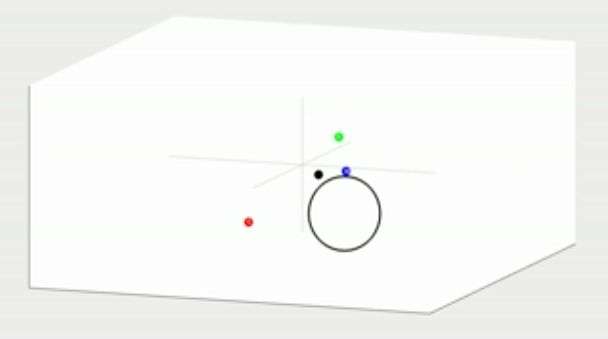Neuroscientists establish brain-to-brain networks in primates, rodents

Neuroscientists at Duke University have introduced a new paradigm for brain-machine interfaces that investigates the physiological properties and adaptability of brain circuits, and how the brains of two or more animals can work together to complete simple tasks.
These brain networks, or Brainets, are described in two articles to be published in the July 9, 2015, issue of Scientific Reports. In separate experiments reported in the journal, the brains of monkeys and the brains of rats are linked, allowing the animals to exchange sensory and motor information in real time to control movement or complete computations.
In one example, scientists linked the brains of rhesus macaque monkeys, who worked together to control the movements of the arm of a virtual avatar on a digital display in front of them. Each animal controlled two of three dimensions of movement for the same arm as they guided it together to touch a moving target.
In the rodent experiment, scientists networked the brains of four rats complete simple computational tasks involving pattern recognition, storage and retrieval of sensory information, and even weather forecasting.
Brain-machine interfaces (BMIs) are computational systems that allow subjects to use their brain signals to directly control the movements of artificial devices, such as robotic arms, exoskeletons or virtual avatars.
The Duke researchers, working at the Center for Neuroengineering, have previously built BMIs to capture and transmit the brain signals of individual rats, monkeys, and even human subjects to artificial devices.
"This is the first demonstration of a shared brain-machine interface, a paradigm that has been translated successfully over the past decades from studies in animals all the way to clinical applications," said Miguel Nicolelis, M.D., Ph. D., co-director of the Center for Neuroengineering at the Duke University School of Medicine and principal investigator for the study. "We foresee that shared BMIs will follow the same track, and could soon be translated to clinical practice."
To complete the experiments, Nicolelis and his team outfitted the animals with arrays implanted in their motor and somatosensory cortices to capture and transmit their brain activity.
For one experiment highlighted in the primate article, researchers recorded the electrical activity of more than 700 neurons from the brains of three monkeys as they moved a virtual arm toward a target. In this experiment, each monkey mentally controlled two out of three dimensions (i.e., x-axis and y-axis; see video) of the virtual arm.
The monkeys could be successful only when at least two of them synchronized their brains to produce continuous 3-D signals that moved the virtual arm. As the animals gained more experience and training in the motor task, researchers found that they adapted to the challenge.
The study described in the second paper used groups of three or four rats whose brains were interconnected via microwire arrays in the somatosensory cortex of the brain and received and transmitted information via those wires.
In one experiment, rats received temperature and barometric pressure information and were able to combine information with the other rats to predict an increased or decreased chance of rain. Under some conditions, the authors observed that the rat Brainet could perform at the same level or better than one rat on its own.
These results support the original claim of the same group that Brainets may serve as test beds for the development of organic computers created by the interfacing of multiple animal brains with computers.
Nicolelis and colleagues of the Walk Again Project, based in the project's laboratory in Brazil, are currently working on a non-invasive human Brainet to be used for neuro-rehabilitation training in paralyzed patients.




















